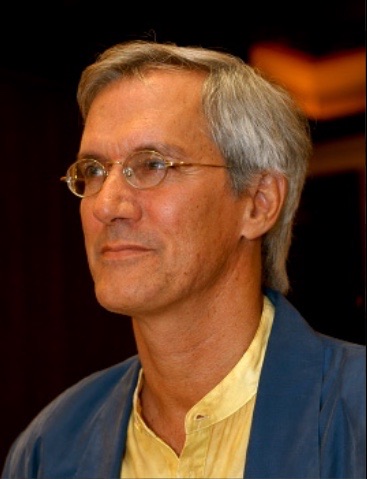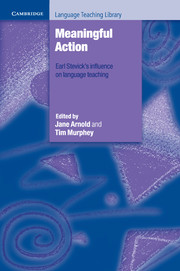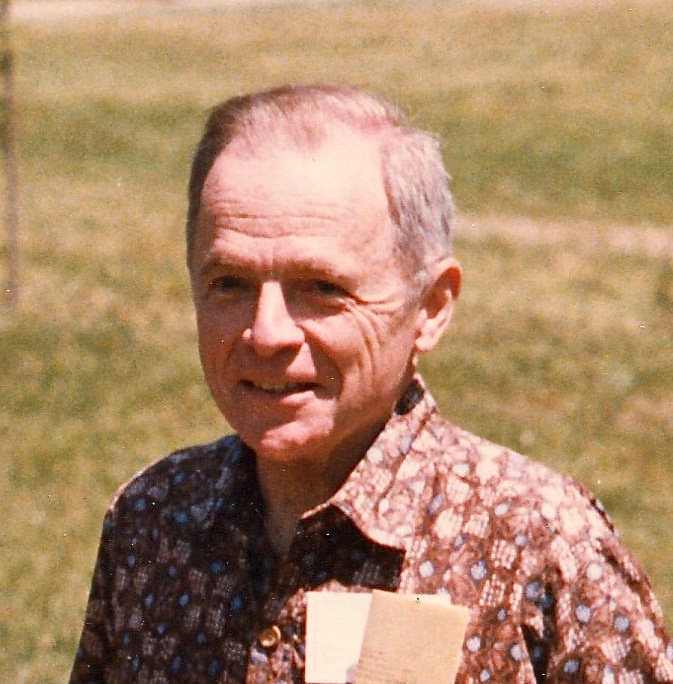Earl Stevick’s Impact
Jane Arnold was Full Professor of Language Teaching Methodology at the University of Seville (Spain) until she retired. She has numerous publications and has given plenaries and workshops as well as teaching modules for Masters in several European countries, North and South America, Africa and Asia. Her main research area is the affective domain of language learning and teaching.

Tim Murphey (PhD Université de Neuchâtel, Switzerland, Applied Linguistics). He has been a plenary speaker 21 times in 15 countries since 2010. He is presently a semi-retired visiting professor at the Research Institute for Learner Autonomy Education (RILAE), Kanda University of International Studies.

Introduction
Jane Arnold and Tim Murphey both knew Earl Stevick and, like many others, were influenced by his publications and conferences. They co-edited a book based on his work in 2013 with Cambridge University Press.

They would like to discuss here several things about Stevick and his work, many of which were mentioned by Jane for the Pilgrims Café, March 5, 2022

The interview
Tim: Jane, why did you become interested in Earl Stevick's work?
Jane: Many years ago when I was starting to work as a language teacher I felt that I needed to do more with students in my classes than just explain a few things, have them open their textbook, and do the exercises there so I started to read Earl Stevick's books to see what else was involved in becoming a good language teacher and providing the most useful ways of learning for my students. I was very inspired by what I read there, especially by one sentence in his book Teaching Languages. A Way and Ways (Stevick: 1980: 4) where he wrote: "Success (in language learning) depends less on materials, techniques and linguistic analysis and more on what goes on inside and between the people in the classroom".
Tim: That sentence is very often quoted indeed. Could you point out what he meant by inside and between?
Jane: Yes, Inside refers to individual factors such as motivation, anxiety, learning styles, self-esteem and between refers to relational factors between classmates and between teachers and students. This was for me a good explanation of what the affective factors were and how they relate to language learning and this greatly influenced the work I did on the affective aspects involved in the language teaching and learning process. It has been related to most of my presentations at conferences and to my first book with Cambridge University Press, Affect in Language Learning (Arnold 1999). I have worked in many ways to explore the importance that affective aspects have on language learning, and this has been a central factor for what I have done from my first contact with Earl Stevick and his work to the present. So for this I have been very grateful to Earl.
Tim: Jane, your work on “affective factors” in language learning has been important and helpful to many teachers, and of course their students! It is cool that part of your work was inspired by Earl. I think many people were especially influenced also by the last part of the quote, the “between people in the classroom.” Dornyei and Murphey (2003) for example cited the same phrase in their “group dynamics” book. A teacher’s dream is to have their group of strangers become a collaborative community as they make an effort to speak in a foreign language with the help of interesting activities and the caring teacher.
But for you, it wasn’t just reading his books, was it?
Jane: No, getting to know him personally was also really important for me then. Since I was very influenced by his work, when in the 1990’s I was teaching at the University of Seville, I organized a way to invite him to give a workshop for language teachers, and so then he came to Seville where I met him and connected very closely with him. One reason for this connection, as I have mentioned in several contexts, was because talking to him then in person about his life I found out that he grew up in the United States in a small town in Missouri right by where my father, who was about the same age as he was, also grew up, and Earl’s way of speaking reminded me of my father. I also saw Earl later at other moments and always enjoyed learning from him many things about teaching and about life. I was also impressed by his professional background. He had a degree from Harvard University, a Masters in teaching English as a foreign language from Columbia University and a doctorate in linguistics from Cornell University. He taught at the Foreign Service Institute and many other places, developing language teaching programs around the world.
Tim: When you contacted me to see if I would be interested in editing a book about Earl’s work, I thought it was a great idea and I agreed to collaborate to prepare a book that would be a tribute to Earl. To start with, we got in touch with important teachers, researchers and writers in the field of language teaching who agreed to contribute a chapter. We ended up with 19 chapters, and most of the authors of chapters in the book knew Earl personally and had a deep connection with him and his work. Our book - Meaningful Action. Earl Stevick’s influence on language teaching - relates to different areas he dealt with which can have a strong impact on success in language learning such as motivation, autonomy, self-esteem, active participation in the classroom, and many more things. Stevick had written that meaning deals with what difference participation in an activity makes to a person, related to his or her entire range of drives and needs. I really enjoyed working with you on this book. How did you get the idea for this project?
Jane: I called Earl on his birthday in 2010 to see how he was, since he was getting on in years then. While I was talking to him about different things, I began to think that I wanted to participate in a book that was a tribute to his work, which had been so important in the field of language teaching in diverse ways for me and for many others and which I felt was closely related to bringing meaningfulness to the classroom. So after our conversation, I considered the possibility of preparing a book dedicated to Earl on the topic of meaningful action and then I contacted you to see if you would want to edit it with me. So the book came to life. You like the way the book is organized, don’t you?
Tim: Yes. There are three sections each with several chapters in the book: Part A: Meaning-making inside and between the people in the classroom focuses on interaction that takes place between students, and also students and teachers; it looks at the intrapersonal and interpersonal aspects of learning. Part B: Meaningful classroom activity deals with creating meaningful and effective classrooms activities which includes ways of moving classroom activity away from that which is unproductive towards that which will result in real learning. Part C: Frameworks for meaningful language learning gives us ideas about how meaningful action can change the dynamics of classrooms and institutions, and how to manage that change and find the structures and conditions that best support the language learning process. (Arnold & Murphey 2013)
It got published by Cambridge University Press in 2013, almost too late for Earl, wasn’t it?
Jane: Well, as soon as there were copies, I had one sent to Earl. At that point he was not in good health and I doubt he could actually read it but at least he had it to know about the tribute to him made by many important authors before he died later that same year. The book ends, appropriately, with an Epilogue by Carolyn Kristjánsson which assesses the influence of Earl Stevick and his contribution to the field of ELT, and with a series of tributes to him by those who found his work inspirational. The book is a celebration of a great educator and of the importance of his work for language teachers.
Tim: Stevick’s work had a lot of influence on the field of language teaching at the end of the last century, didn’t it?
Jane: Yes, for several reasons. Along with many articles, Stevick published several books and they were very influential --Memory, Meaning and Method, Teaching Languages - A Way and Ways, Teaching and Learning Languages, Images and options in the Language Classroom. Humanism in Language Teaching, and Working with Teaching Methods What’s at stake, Though at the time when I was beginning my profession as a language teacher, I may not then have followed everything I read there, but his work was very useful for me in many ways and it had a significant influence on my professional activity and even on my life.
Tim: Earl wrote many things related to the importance in language teaching of making the learning process something that is relevant both for students and teachers. He stressed the importance of affective factors as they can change a learner’s inner resources to make them more useful for the learning process. Not all teachers in later years have read his books but his influence may still be there in many ways when teachers are concerned with making their teaching meaningful for students, and several authors have written about how to do so. One conclusion from Earl’s work is that what we do in the classroom should not just be related to external perspectives about what to do but should connect with the learners themselves and their interests and needs. If this connection exists, they make more effort to learn the language and enjoy the process more.
Jane: For this reason, mechanical activities involving just reviewing grammar points will lead to less productiveness than activities which teach aspects of the language but also are meaningful and interesting for students. Good teaching then, as Earl pointed out, is not just a collection of techniques, even though these may be useful and necessary. But we also need to be concerned about connecting with students and motivating them to learn. Making the learning process “meaningful action” was important for Earl. Action could just be opening a textbook and doing a grammar activity but this would not necessarily be meaningful action for learners and that is what Stevick stressed was essential for “depth” in learning. He never said we need to forget more traditional activities but we can adapt them and make them more meaningful. In the book The Principled Communicative Approach, it is explained that we can use drills which are based on repetition but which are also interesting and can motivate students and bring about meaningful communication (Arnold, Dorneyi, Pugliese 2015).
Tim: Adrian Underhill has presented an interesting model of the evolution of teachers where he explains what he calls a Lecturer, someone who knows the language and so can teach it just presenting rules etc. But not all goes well so the Lecturer learns methods and becomes what Underhill calls a Teacher who also knows methods and techniques, but he points out that there is a further step which is that of a Facilitator who knows the language and methods but also ways to create a psychological atmosphere which leads to high quality learning and meaninful action - this includes many things Stevick wrote about.
Jane: A lot of people have mentioned interesting things about Stevick’s influence. Scott Thornbury (A-Z of ELT), referring to Stevick’s book Teaching Languages: A Way and Ways, wrote that at one point “I was no longer sure that a methodology of elicit-and-repeat would ever result in conversational fluency. Nor was I comfortable with a methodology that reduced learners to the role of passive consumers of ‘grammar mcnuggets’. But I still hadn’t fully grasped the critical role that affect plays in learning – language learning not least. Learning, for me, was still a purely cognitive process. By opening my eyes to the emotional and attitudinal dimension of learning, under the umbrella of humanistic learning theory, Stevick’s book marked a milestone in my professional development”.
Tim: And this was true for many of us. Earl Stevick’s legacy for the language teaching world has been very important. At a time when many theoretical and practical elements related to language teaching were developing, his work, both in his publications and his presentations at conferences and courses all over the world, made important contributions that influenced the field of language teaching. Many people remember with gratitude his teaching skills, his ideas about how to teach and ways to relate to others in the process of education.
Jane: Yes, Stevick was a mentor for many people from the language teaching world who have been influenced by ideas in his books and from hearing him speak and from working with him in different ways. We could perhaps say that in our profession for some of us he was like a father and for others more recently a grandfather. In his work he didn’t just tell people what to do but helped them work to discover what would be best for them. He stressed that he felt how besides focusing on teaching the language, we need to focus on teaching people. Teaching for him was seen as not just doing things all the time with the textbook but it involves the need to adapt teaching techniques and the materials used in class according to each specific context to help students learn more effectively. Of course this doesn’t mean we have to prepare everything all the time but rather to develop special activities once in a while in order to connect with our students more directly and create more enthusiasm.
Tim: Earl put a lot of emphasis on creativity, didn’t he? And you have taken this into consideration.
Jane: This is one part of Earl’s legacy for me and it has led me to use more creativity and to enjoy my classes more. And creativity was an important factor for him. When we work with it, our classes are not only better for our students but also for ourselves. He once said that creativity in the classroom is not just what teachers do but what they make it posible for students to do.
Tim: Earl also pointed out that for teachers to find the ways students learn best, they need to get to know their students more. And one thing he did many years ago – at a time when this was still new – was to discuss in his publications and presentations how there are many different ways to deal with language teaching and there are several methods for teaching. He showed how just knowing the rules of the language we teach and passing the rules on to students wasn’t all we need to do as language teachers. He stressed that we also need to know the best ways to have students learn these rules and how to use the language to communicate. He discussed diverse teaching methods and helped teachers to see the importance of learning a language through such things as interaction in the classroom and seeing the classroom as a community of learning where students know and respect each other, where there is interaction among them, where they share goals and there are opportunities for social contact as well as for getting linguistic information. It is an enlightened way of dealing with our profession.
Jane. Very true. Earl showed that there was not just one fixed way for us to teach a language but that we need to take into account things such as the context, our students, their needs and especially what is meaningful for them. And this includes considering not just their brains but also their bodies and feelings. All this was important then in the developing field of language education. He presented many things which have influenced how the field has progressed over several decades, an important part of his legacy.
Tim. Earl’s work is still very were relevant in today’s world. I think we might say Earl was an early advocate of “partnering” our students to give more meaningfulness to the classroom and what we were teaching (Eisler 2000, 2002). Partnering means listening and seeing what excites their learning and asking them to share their views and emotions of what is happening with everyone in the class. He inspired me to do action logging (Miyake-Warkentin et al. 2020; Murphey 2021), which is basically about asking students to tell their teachers what they have experienced in each class so that the teacher can know “Where to go next” (Hattie & Clarke 2019). These ideas are very Stevickian!
Jane. Wow! Stevickian, I like that! At the end of the last century Stevick had a strong influence on the field of language teaching. In a book edited for Cambridge University Press, (Arnold, 1999) very few authors were cited as many times as Earl. And shortly after his death, HLT published an article about him with many contributions from teachers who have been influenced by him http://old.hltmag.co.uk/feb14/mart01.htm
And his influence still exists. For example, he is mentioned several times in the Routledge Handbook of the Psychology of Language Learning and Teaching (Tammy Gregerson & Sarah Mercer 2020).
Tim: I also greatly appreciated Earl’s comment on the back cover of my book Language Hungry! (Murphey, 1998), which I also think describes much of his own work: “This is a little treasure of serious ideas for enjoying learning and helping others to do the same. It is unconstrained by the usual, and refreshingly free of excessive concern for dignity. Presented with the lighthearted authenticity of an explorer ever willing to learn from his own occasional ‘wonderful failures’ as well as from his successes. Let’s welcome it!” I honestly think he was describing more himself than me, or perhaps more what he wished to see in the world.
Jane: We know that Earl throughout his profesional life gave a lot of information for teachers but also a lot of inspiration. Both things from him have been important. A great legacy indeed.
References
Arnold, J. (1999). Affect in Language Learning. Cambridge: Cambridge University Press.
Arnold, J. (2022) Pilgrims Café, March 5
Arnold, J., Dornyei, Z. & Pugliese, C. (2015) The Principled Communicative Approach. Helbling Languages: London.
Arnold, J. and Murphey, T. (eds.) (2013). Meaningful Action: Earl Stevick’s Influence on Language Teaching. Cambridge: Cambridge University Press.
Eisler, R. (2000). Tomorrow’s Children Bolder, Colorado: Westview Press.
Eisler, R. (2002). The Power of Partnership. Novoto Ca: New World Library.
Hattie, J. & Clarke, S. (2019). Visible Learning: Feedback. Routledge: London
Gregerson, T & Mercer, T. (2020). The Routledge Handbook of Language Learning and Teaching.Routledge: New York & London.
Murphey, T. (1998). Language Hungry! Tokyo: MacMillan Languagehouse. (present publisher Helbling)
Murphey, T., (2021). Learning Voices. (Bk) Hong Kong: Candlin Mynard:. https://www.amazon.co.jp/-/en/Tim-Murphey/dp/B08SGYGR2N
Miyake-Warkentin, K., Hooper, D., & Murphey, T. (2020). Student action logging creates teacher efficacy. In P. Clements, A. Krause, & R. Gentry (Eds.), JALT 2019 Proceedings. https://jalt-publications.org/articles/25989-student-action-logging-creates-teacher-efficacy
Stevick, E. (1976). Memory, Meaning and Method. Rowley, MA: Newbury House.
Stevick, E. (1980). Teaching Languages. A Way and Ways. Rowley, MA: Newbury House.
Stevick, E. (1982). Teaching and Learning Languages. Cambridge: Cambridge University Press.
Stevick, E. (1986). Images and options in the Language Classroom. Cambridge: Cambridge University Press.
Stevick, E. (1990). Humanism in Language Teaching. Oxford: Oxford University Press.
Stevick, E. (1998). Working with Teaching Methods What’s at stake? Boston: Heinle & Heinle
Thornbury, S. An A-Z of ELT. https://scottthornbury.wordpress.com/2010/11/21/s-is-for-earl-stevick
'The Pity of War'
ed. Alan Maley, UKUkrainian Illustrators on Instagram
Jamie Keddie, SpainThree Stories
Andrew Wright, HungaryEarl Stevick’s Impact
Jane Arnold, Spain;Tim Murphey, JapanDressed in Borrowed Robes: Telling Our Stories in a Foreign Language
Claudia Mónica Ferradas, ArgentinaAfter the Storm
Charles Hadfield, New Zealand